Introducing RETORT
RETORT
RETORT is a bimonthly publication of foreign affairs.
Six continents. Six essays. Six times a year.
And everything else in between.
RETORT has one aim: to smash conventional wisdom.
Zuri
ZURI
I love twitter! To me it is the perfect way to interact with strangers without being too accessible to their personal lives. A friend that I introduced to twitter told me she thought it was for the stars. I began to tell her no but then I thought about it and simply said yes, because in our own right we are all stars. It was on twitter that I met a beautiful young lady and I had to share her with the world but instead of a Q & A session I asked her to share her life with us. I hope you find her as interesting as I do.
Kisses Bougie.
Meet Zuri
Location: Washington, DC
Bio:
"In order to be irreplaceable, one must always be different." ~ Coco Chanel
Tracey, also known as Zuri, which means Beautiful in Swahili, is a lover of fashion, music and life. I am 28 yr old single, young, aspiring model/singer, born and raised in Washington, DC. I am a graduate of St. John's College High School, were I was in the school choir. After graduating I then went on to study music at Virginia Union University, but my love for music and singing came from being in church. That’s where it started. I have always had a love for music every since I was little, but not only have I had a love for music, but I have a love for fashion as well. I have always wanted to model, but didn't think tall or small enough to pursue it. I always wanted to be a model because fashion is a deep passion of mine. To be a model, it takes more than just a pretty face. I think modeling is an expressive art form and tells a story without words. You can show movement in a still picture, and I think that is incredible to be able to have that skill. I want to be known as the alluring beauty with voluptuous curves. I love my curves because they are a part of me. They help make me the woman that I have grown to love today. This is the body that God gave me, why shouldn't I love them. They make me feel sexy, sassy and confident. As Coco Chanel said “A girl should be two things: classy and fabulous.” My all time favorite model would have to be Marilyn Monroe. I loved her confidence and how she was not afraid to be herself. She didn’t care what anyone had to say about her and you just had to love her. My favorite color is pink, I love stepping out in a pair of my highest heels and my hottest outfit, feeling like I am on top of the world. Some of my hobbies include traveling, meeting new people, listening to music, singing, taking pictures, reading, watching sports, dancing and of course shopping. I love motorcycles and plan on owning one really soon. I am also big on family, because my family has always been there for me. We are very close even if we do get on each other’s nerves from time to time, but what family doesn't have its ups and downs. My family is very supportive of me in everything that I do, and for that I am grateful.
Where to go to find Zuri www.facebook.com/ZuriKalea, http://www.modelmayhem.com/ZuriKalea and http://www.twitter.com/ZuriKalea

Post title...
Myra Vidal Art Show
Contemporary artworks, music and conversations.
Recommended by Photographer Daniel Schäfer.
Follow us at myravidalartshow.tumblr.com
Welcome
Hi All
Instead of telling you all that will be going on on this site just stay tuned and keep checking and I am sure there will be something here for everyone.
Kisses Bougie
What Graffiti Artists Do
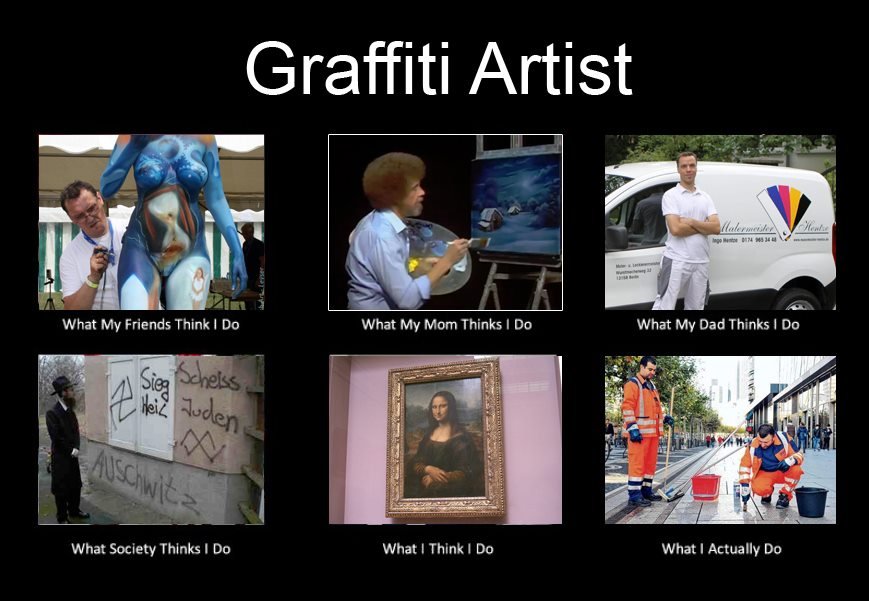
Post title...
Signs of Life:
Language, Culture, Growth, Healing
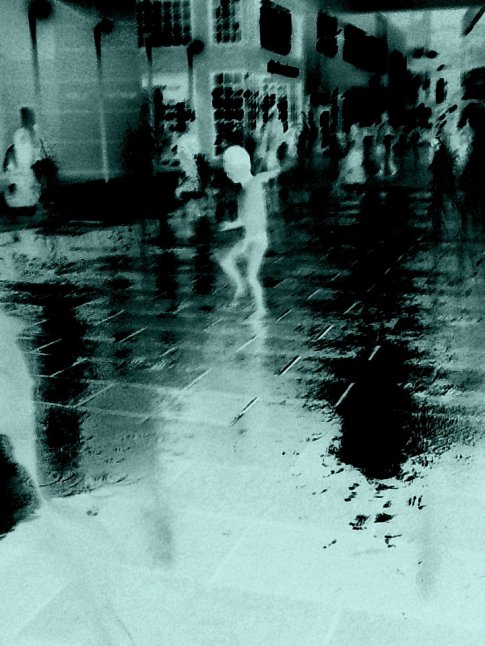
A Tribut to Hard Work: Sam and Michael Marcus
In a dimly lit gym with bad ventilation and one-hundred degree Bakersfield heat outside, you hear the sounds of hard work. The heat in the gym is so extreme it seems like you can see heat waves raising from the floor. Fifteen minutes of ball-handling as a warm up, form shooting from each spot under the basket, one dribble left, jump shot, swish... one dribble right, jump shot, swish... catch and shoot from three, swish. As I returned to the states after spending ten months in Europe, this was my memorable glimpse of Sam Marcus.
Dwuan Rice, who was working with BUA at the time, said he was training Sam Marcus in the old gym at CSUB and that I should come by to check it out. Any player who has ever trained with Dwuan knows that he’s no push over as a trainer. His drills can be very challenging and he works his clients very hard. As I walk through the gym doors I see a kid drenched in his own sweat, so tired he can hardly stand up to shoot the ball. In a joking manner I’m thinking to myself, “Lord please don’t let this kid pass out and have me answer to his parents”. I had read about Sam in the news papers and there had been friends of mine who coached him and told me about his talent, so I knew he was a good player. But who would have thought he was that tough and that much of a hard worker? It’s just not something you see very often from young basketball players coming out of Bakersfield. I was impressed to say the least. Out of all the times we worked with Sam, not once did I see his mom, dad, or friend standing on the sideline pushing him (which is also rare when your training young kids). I’m sure they did support him to the fullest but my point is that Sam pushed himself. We had worked with a variety of good players at the time. To name a few; Tim Billingsley (formerly at Bakersfield High), Tyron Wallace as a freshman (currently at Bakersfield High), and Korey Thielke during his junior and senior year (West High, currently Portland State). All very good players who at one point in Sam’s High School career may have challenged him in one way or another. Some of them were taller, stronger and more athletic but I cannot say that any of them worked harder which is why Sam has been successful. Every coach/trainer will tell you that there is a player they have worked with in the past who they use to set the standard for their future players as far as work ethic and character. For me, this player will always be Sam Marcus.
A tribute to HARD WORK
Sam and Michael Marcus
written by kyle shiloh
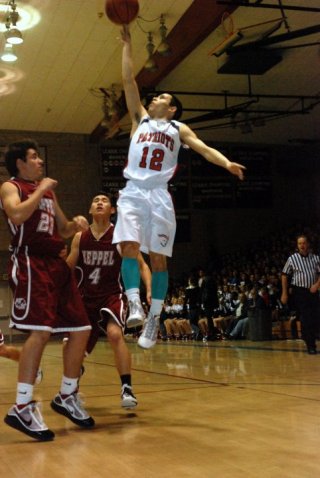
Not too long after this I met Sam's younger brother Michael. Naturally, I immediately measured him to Sam as far as his work ethic, talent, and mental. He took me by surprise not only because he had the same if not more focus and mental, but because he had so much confidence on the court. Now don't get me wrong, these are very grounded and humble young men. But the best players on the court always have the most confidence so it was good to see. When Michael was a sophmore he started training with us and Sam. With all the text messages and phone calls we received specifically from these two kids about working out, it was almost as if Sam and Michael were competing for who could get the most work outs in each week. Hours before a game, weekends, early or late in the day... it didn't matter, Michael was following Sams footsteps with hard work and it came natural. Take a look at Michael's highlight tape to the right and you can also see Sam's High School highlight tape as well. Intersting how similar their games are.


Michael, at age 18, is currently in his Senior of High School. He's currently averaging 16 points, 5.5 assist, and 3.4 steals per game. in his senior season. Michael has been voted 2nd team all league twice, lead his team in points, assist, steals, 3 pointers made, and freethrows made. "My season is going really well, we broke the schools record on our senior night with the most wins in a season. We are currently 15-8 with 2 games left in league and also playoffs right after that. We had some really tough wins this season with our best game beating BHS in double overtime by 3 points. I know that my team will win in playoffs and I am planning on winning a Valley Championship this season." He has a overall GPA of 3.77 and received a 4.16 the first semester of his senior year. His plans for the future are attending a 4-year University to play basketball. Afterwards, he intends to get his Biology degree, attend Pharmacy school at UOP and one day become a Pharmacist. Michael and his brother Sam have both received the Jockey Club Award twice during their Junior and Senior years in High School.
In an interview with Michael, we asked him what were some of the advantages of growing up watching his big brother Sam play. He replied, "Watching my brother Sam growing was such an advantage for me. I've got to learn what it takes to get better by watching him. He used to go to these training workouts with BUA and one day he brought me along. These trainers were kicking my butt, but the results were worth it. I got to play with a 2 time all area player, a League MVP and a point guard who lead his team to a Valley Championship. He was amazing for me that I got to grow up and play all the time with someone as inspiring with a background like his. I was lucky to be able to gain all the insight and knowledge that he taught me growing up." Michael and Sam also have a younger brother Aaron who has spent some time this year in BUA's Developmental Leagues. Sam was able to use his success on and off the court to help guide Michael and now Michael hopes to do the same with Aaron. It's really a thing of beauty to see.
This brings me to the topic of the inconsistency in talent and competition in the Kern County area which is often talked about. I'll use Michael's experience as an example. Michael began playing basketball when he was in the 3rd grade. He started out playing in the NJB league and later switched to the Bakersfield Gladiators where Coach Hubbert taught him the game of basketball. He later played AAU ball with various teams such as the Bakersfield Dawgs and a non local team called the Icemen. Now the NJB programs are good but with their altered rules and volunteer staff, the program is catered more towards parents/kids who simply want their child to play and are less interested in them learning the game and enhancing their experience. In some cases, programs like this can damage the future skill development of a young athlete. AAU programs such as the Gladiators, which was a very good program, come along every once in a while but do not last which further contributes to the inconsistency of talent over the years. It's rare that we get a chance to hear from current young athletes in the community about this topic, so I asked Michael how he felt about the current talent level in the area and what he thinks can improve it. He replied, "I feel that in town we have a lot of potential talent here, I think a couple years back that the talent level was a lot higher than it is now. We have a few guys this year in town who will probably do some good things at the next level. Also we have some young guys who are doing really well, and will help to bring the talent level back in Bakersfield like it once was. For the talent level to get back to where it was I believe that the upcoming players need to play more basketball on a consistent basis, so they can get reps on their game. I would also recommend them to do some personal training with the BUA Trainers. With that they could build there game, which will help them succeed in high school and also the next level if they can make it that far." Considering the lack of athletic resources that Sam and Michael were provided in the early years of their youth, I think it's safe to say that they have accomplished a lot on and off the court. And as long as players like them continue to come and go, every coach and every trainer will always have that one player to use as a standard for those to come.

Fairbourne Station — Getting Back to Our Roots
Fairbourne Station — Getting Back to Our Roots
By Kylee Norton
WEIGHING IN ON FAIRBOURNE STATION
Fairbourne Station — referred to as the focal point of West Valley City — is more than just a fancy, new entertainment center and tourist haunt.
For many Utah residents, Fairbourne Station is the focal point of West Valley City because they share a branch on the same family tree.
This multi-phase development project is named for West Valley City’s own Joseph Watson Fairbourne.
In the early days of “Fairbourne Station,” Joseph Fairbourne’s weighing station was a common stop where local farmers, ranchers and other residents would come to weigh the goods they planned to sell at market. As more and more residents flocked to the station it began to transform into the heart of West Valley City’s center for commerce, trade and economic development. With Joseph at the scales, locals were “weighing in” on more than just beef and lettuce. They were discussing the progress of their great city, dreaming about the day when West Valley City would become Utah’s landmark for progress and innovation.
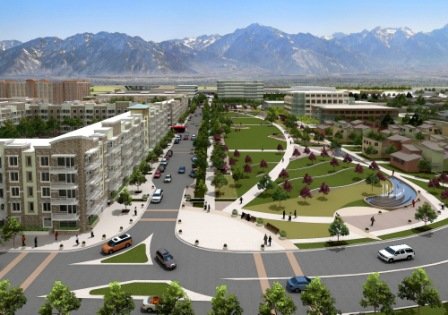
Fairbourne Station — Getting Back to Our Roots
By Kylee Norton
FAIRBOURNE: REBORN
Fairbourne Station located between 3500 South and Lancer Way is currently in phase one of completion.
“Phase one includes the park and Embassy Suites; the park will open July 2012 and the hotel November 2012,” says Aaron Crim, director of public relations and neighborhood services. “Phase two includes the residential and office components, which will break ground later this year. The timing of additional phases has not yet been determined, but will include additional residential units and a civic center which will include a relocated City Hall and library.”
The “Master Vision” for Fairbourne Station is being spearheaded by Nicole Cottle, economic development director, and her team of experts.
“Fairbourne is a priority for several reasons,” Crim says. “For many years, West Valley City has wanted a recognizable downtown area; also, the area surrounding City Hall is one of the older areas of the city and has become blighted, making it ripe for redevelopment.”
Fairbourne Station and the surrounding area will receive a complete facelift thanks to the involvement of many gifted partners and contributors. Stanley Consultants will be functioning as the plaza designer, ICO Management is heading the residential side of things, and GBS Architects will be focusing on the promenade, just to name a few.
Many individuals worry that the collaboration of so many corporations could lead to conflict in regards to the planning design. But each of these corporations is proving that they share the same vision and hope for West Valley City and Fairbourne Station.
If it truly takes a village to raise a child, it seems only natural that it would take Utah’s second largest city to raise the infrastructure of Fairbourne Station.
IN ALL FAIRNESS
For those involved in the dozens of planning meetings and council sessions, it is fairly obvious that Fairbourne Station will bring West Valley City an economic boom of seismic proportions. But for those who have not been following every press release, status update and tweet, it is only fair to assume they would have a few lingering questions.
Among many residents there seems to be a bit of hesitation about such a grand project because of the current economic climate.
“This is definitely a major undertaking in this economy,” Crim says. “However, timing is perfect. By creating a Redevelopment Area, the city can fund the project using future tax allocations and redevelopment funds. Also, construction costs are lower during the recession giving us a bigger bang for our buck.”
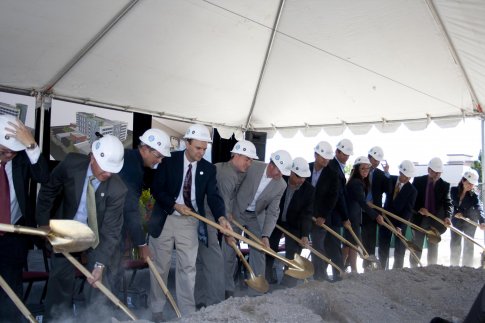
COME ONE COME ALL
Developers and city officials predict that the additions of new residential housing, tourist accommodations and green space will attract the type of visitors and locals who will work together to bring additional prosperity to the area.
“West Valley City has already seen success with the development because the new synergy in the area has drawn several other major projects such as the Valley Fair Mall redevelopment and the Megaplex Theater,” Crim says. “More projects will soon be announced that are directly related to the efforts within and around Fairbourne Station. In addition, the new hotel, apartments, shopping and dining options will add more tax revenue to the city's coffers.”
With this flux of newcomers the overall infrastructure of the roadways and parking will also have to undergo major reconstruction. City officials want to ensure residents that road safety and efficiency will remain a top priority amidst the changes in the area.
“Traffic flow has been a concern since the beginning, and West Valley City has worked with traffic engineers to ensure an efficient design,” Crim says. “Roads have been designed to allow proper traffic flow, and structures have been designed to include ample parking. Fairbourne Station is a ‘transit oriented development,’ so much of the project has been designed based on the research that shows certain percentages of visitors, residents and workers using public transit.”
If all goes as planned, by December 2012 Fairbourne Station will be hustling and bustling with more than just the spirit of the Christmas.
City officials mean it when they say Fairbourne will be the focal point of West Valley City — it is the center of the community, not just the center for tourism.
“The development has a four-acre park that will draw all ages and lifestyles,” Crim says. “The Embassy Suites hotel will draw tourists, and the Class A Housing and public transportation options will draw families and young professionals.”
ALL IN THE FAMILY
As building after building continues to spring up, locals in the 84119 are turning to their family history books in order to stake their own claim on this soon-to-be center for hip trends, entertainment and business.
Yours truly did precisely this when I first heard about the new development. As a descendant from the Fairbourne line, I like to think that the old weighing station runs in my blood.
Joseph Watson Fairbourne’s legacy lives on in each pavement stone and blade of grass between the coordinates of 3500 South and Lancer Way. And although his scales wouldn’t have been able to handle the loads of scaffolding, I am quite confident his descendants are “weighting” in anticipation as Joseph’s dreams for West Valley City take shape at the new Fairbourne Station.

Street Art in....
London
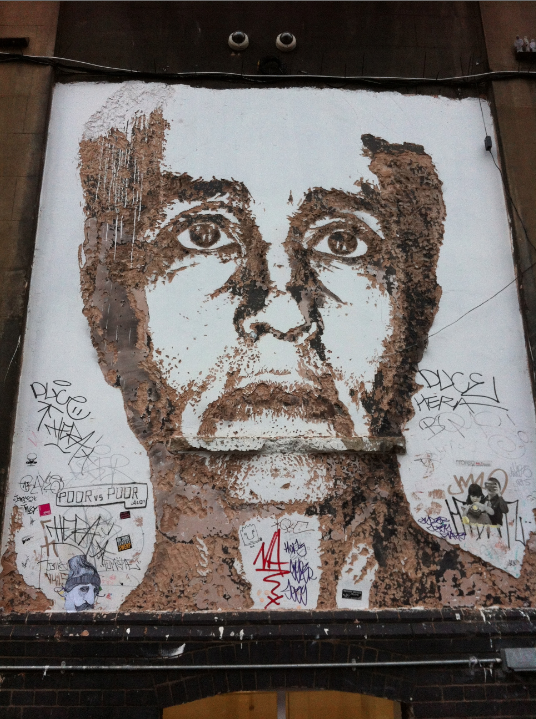
Street Art as seen in ....
... Paris!
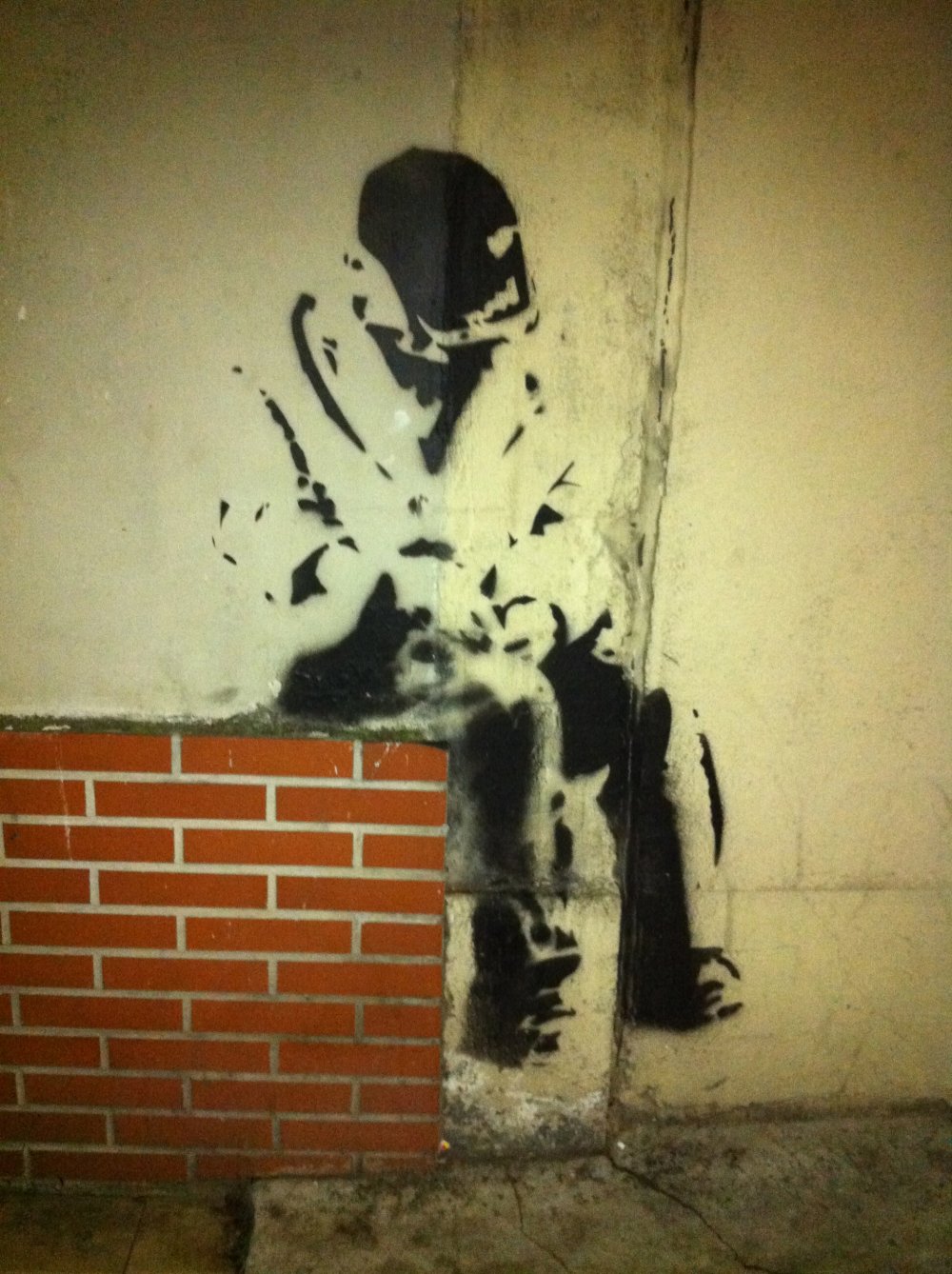
BUA Upcoming Events
SPRING DEVELOPMENTAL LEAGUE 2012
April 2nd - May 19th
Registration deadline: April 1st
Available Divisions: K-2nd, 3rd/4th, 5th/6th, 7th/8th, HS JV, HS Varsity
SUMMER DEVELOPMENTAL LEAGUE 2012
June 25th - August 18th
registration deadline: June 24th
Available Divisions: K-2nd, 3rd/4th, 5th/6th, 7th/8th, HS JV, HS Varsity
FALL DEVELOPMENTAL LEAGUE 2012
September 24th - November 10th
Registration deadline: September 10th Available Divisons: K-2nd, 3rd/4th, 5th/6th, 7th/8th

WHEN: MARCH 24TH
WHERE: BEARDSLEY MIDDLE SCHOOL
TIME: EVENTS START @ 6:00PM
Who: The top Middle school boys and girls in the county
BUA MEMBERSHIP
BUA now has a Membership available for all ages. The Membership is a year round program that includes participation in each of our Developmental League sessions throughout the year (Winter, Spring, Summer, and Fall). The benefits of being a member of BUA inlcude discounts on each league session available to your child, a low monthly payment option, and year round basketall which also means year round improvement and fun.
Aveeno Review
Review:

Aveeno Clear complexion foaming cleanser
Let me tell y'all something. If you are looking to clear your skin FAST, look no more. The Aveeno Clear Complexion Foaming Cleanser worked wonders on my skin. I stopped using Proactiv a few months ago, and my skin totally freaked out! I had never had so much acne in my life! While at Target, I spur of the momently picked this prodcut up. Within days, I stopped getting acne, and my acne scares were starting to fade. This is going to be a short review because I'm in class and have no time to do an extremely lengthy one, but I hope I am getting accross to y'all just how good this stuff is! It is about $6.85 at Target. It is a foamy texture and smells really nice. I really like that after you use it, your face feels squeaky clean and soft. I really hope y'all try this out!!
2010 Annual Report
The Evolution Institute connects the world of evolutionary science to the world of public policy formulation. For any given policy issue, we bring evolutionary experts together with other experts for a respectful and constructive dialogue, resulting in a new agenda for basic scientific research, policy formulation, and policy implementation. We have a rapidly expanding portfolio of projects, from early childhood education to the worldwide economy, and we welcome new partnerships with both individuals and organizations.
Thanks to Jerry Lieberman's guidance, we expect to receive 501c3 status in early 2011 and will be formalizing our organizational structure in terms of an executive board and a number of advisory boards.
We are delighted to announce that Peter Turchin has joined the EI as Vice President. Peter is Professor of Ecology and Evolutionary Biology with a joint appointment in Mathematics at the University of Connecticut. In addition to his distinguished career in mainstream evolutionary science, he is pioneering the quantitative study of human history in books such as War and Peace and War: The Rise and Fall of Empires, Historical Dynamics: Why States Rise and Fall , and Secular Cyles (with Segey Nefedov). Peter’s expertise nicely complements my own in the selection and development of focal projects, including a new project on failed states and nation building that will be described in more detail below.

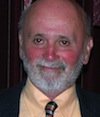



For all of our focal projects, we expect to stay involved over the long term to help implement the research and policy recommendations that emerge from the initial workshops. Our first workshop on early childhood education (held November 2008) inspired Bruce Ellis, who holds the John & Doris Norton Endowed Chair in Fathers, Parenting and Families at the University of Arizona, to organize a similar workshop with us on the topic of risky adolescent behavior (held October 2009), which is now being written up as a special section of the journal Developmental Psychology.
A partnership with the National Evolutionary Synthesis Center (NESCent), the National Science Foundation’s largest evolution-related center, is blossoming in a number of ways. A conference titled “The Nature of Regulation: How Evolution Can Inform the Regulation of Large-scale Human Social Interactions” (held November 2009) led to a contract with the University of Chicago Press for an anthology with original essays introducing each section titled Evonomics: Evolutionary Science as a New Foundation for Economic Theory and Policy. My co-editor for this project is Geoffrey Hodgson, one of the foremost authorities on evolution in relation to economics. For a preview of the new foundation, see Geoff’s recently publishedDarwin’s Conjecture: The Search for General Principles of Social and Economic Evolution (with ThorbjornKnudsen) and my 13-part series titled “Economics and Evolution as Different Paradigms” on my Evolution for Everyone blog.
Another outcome of the “Nature of Regulation” conference is a two-year project funded by NESCent that continues to explore economic theory and policy from an evolutionary perspective. Our first meeting was held in August 2010 and we will be adopting a case study approach, whereby the advantages of the evolutionary “toolkit”, as we are beginning to think about it, are respectfully compared to the toolkits offered by other theoretical frameworks for specific policy issues.
NESCent has also funded a second two-year project titled “Evolutionary Mismatch and What to Do AboutIt.” Adaptations to past environments can tragically malfunction when the environment changes. Myriad problems can be attributed to mismatch, not only for humans but for other species living in human-altered environments. Cultural adaptations can become mismatched in changing environments, just as much as genetic adaptations. We will thoroughly consider the problem of mismatch, starting with the scientific fundamentals and leading to practical recommendations for how to rigorously identify cases of mismatch and what to do about them on a case-by-case basis. This project will be coordinated with other NESCent projects on medicine and health from an evolutionary perspective, taking the EI in the direction of focal topics such as obesity and immune system dysfunctions.

A workshop titled “Evolution, Ethics, and Public Policy” will be held in late April 2011 in collaboration with the Prindle Institute for Ethics at DePauw University. This workshop is critical for the mission of the EI for two reasons. First, evolution became stigmatized in relation to human affairs in part because it was used to justify social inequality, leading to policies that are ethically highly problematic. It is important to be mindful of the past, to show that evolution is not inherently biased toward such policies, and in fact provides a strong argument for social equality. Second, one objective of the workshop is to create an infrastructure for examining the ethical implications of all the policy issues considered by the EI. The John Templeton Foundation has become interested in this project and will send a number of representatives to see if a “new evolutionary ethics” might become part of their mission to “serve as a philanthropic catalyst for discoveries relating to the Big Questions of human purpose and ultimate reality.”
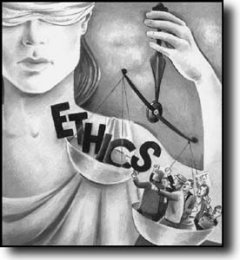
Other workshops in the planning stages for 2011 include one on quality of life with a focus on the workplace and another on the cultural evolution of large-scale human societies with a focus on the modern problems of failed states and nation building. Funds have been raised for both projects and we are currently assembling the evolutionary expertise and venue.
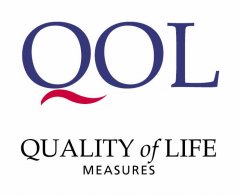
Our influence is also becoming international, including trips to the UK, Iceland, Australia, and New Zealand during 2010. A workshop titled “Evolving the Future: An Exploration of How Evolutionary Thinking Can Inform Public Policy” was organized with philosopher of biology Paul Griffiths and held in Sydney, Australia in September 2010. The participants included Sir Peter Gluckman, New Zealand’s chief science advisor and authority on Darwinian medicine. This workshop will probably result in a project on obesity that not only will address this important subject from an evolutionary perspective, but will carefully examine how the evolutionary toolkit guides inquiry, compared to the toolkits provided by other theoretical frameworks.
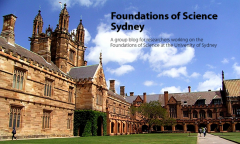
My next trade book, titled The Neighborhood Project: Using Evolution to Improve My City, One Block at a Time, is finished and will be published by Little, Brown in the summer of 2011. It conveys the evolutionary paradigm to a broad audience, including the formation of the EI and several of its projects. Every author hopes that their book will become a best seller; in my case, I also have high hopes that The Neighborhood Project will attract widespread attention to the EI and its mission.
Message From the President:
I hope you agree that 2010 was a very good year! I will end this report by reflecting upon what the future holds in store for us.
When Jerry and I started the EI in 2007, the overriding question was whether evolutionary science had anything to contribute over the short term or if a long academic lag time would be required. After all, the human-related academic disciplines are only newly being approached from a modern evolutionary perspective. Major public policy issues such as health, education, social welfare and the economy have already received an enormous amount of attention from more established perspectives. Wasn’t it presumptuous to think that we could succeed merely by looking at these old problems in a new way? Reviewing our progress as of 2010, I am confident that evolutionary science can make a meaningful contribution to virtually any public policy issue from the very beginning—not only in terms of what it has already been discovered from an evolutionary perspective, but in terms of the theoretical and methodological toolkit that it offers for future inquiry.
Now the overriding question is how fast we can become a permanent organization with the capacity to fill a vast vacant niche. We have succeeded spectacularly at the level of single projects, both in terms of raising funds for workshops and the progress made on their basis. What we need, in addition, is to raise funds to hire a staff and to relieve Peter and me of some of our professorial duties so that we can concentrate on developing the EI to its full potential. Consider that there is currently no mechanism whatsoever to connect the world of evolutionary science to the world of public policy formulation. Consider further that there are powerful and well-funded organizations, such as the Discovery Institute, whose mission is to spread misinformation about evolution. If the EI could become an organization on a par with the Discovery Institute, the effect on general attitudes toward evolution would be transformative. It has been said that science is widely accepted as soon as it becomes engineering. The reason that physics and chemistry are widely accepted is not because they are better supported by facts than evolution, but because they are so eminently useful in daily life. Evolution will become widely accepted as soon as it is shown to be useful in daily life and not before. The mission of the EI is to accomplish that transformation.
In this regard, I would like to acknowledge the support of Bernard Winograd, Executive Vice President and Chief Operating Officer, US, of the Prudential Corporation. Bernard is a longtime supporter of the National Center for Science Education, which heroically fights to keep evolution in the public school curriculum, and took an interest in the EI from its inception. Not only has he contributed to the general operating budget of the EI, including a portion of my salary to reduce my professorial duties, but he has taken a strong intellectual interest in the projects and added his considerable expertise by attending the “Nature of Regulation” conference held in 2009. We also acknowledge the on-going support from the Aaron and Martha SchecterPrivate Foundation and Robert and James Stephen. Their support has been essential in supporting our workshops at the University of Miami and Arizona. They are also providing the foundation for next yearsworkshop at Stanford and for the one on Quality of Life. The host university for this project will soon be announced. We believe that other leaders with a strong interest in science, evolution, and public policy will join Bernard, the Schecters and Stephens by becoming involved in the support and operation of the EI.
Sincerely,
David Sloan Wilson


2011 Annual Report
EVOL-building project
EVOL
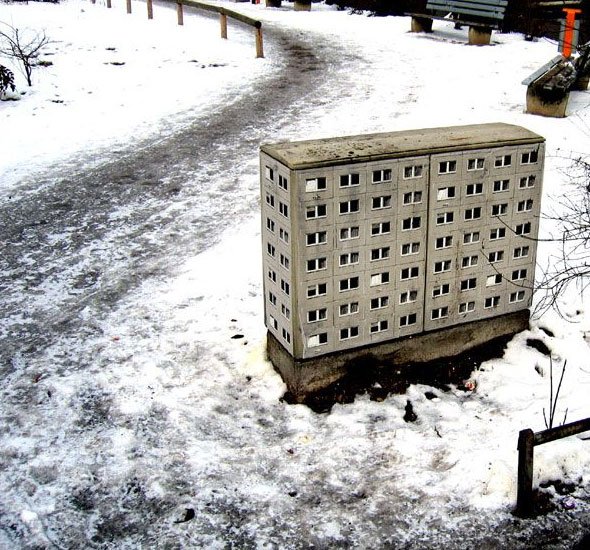
STREET ART
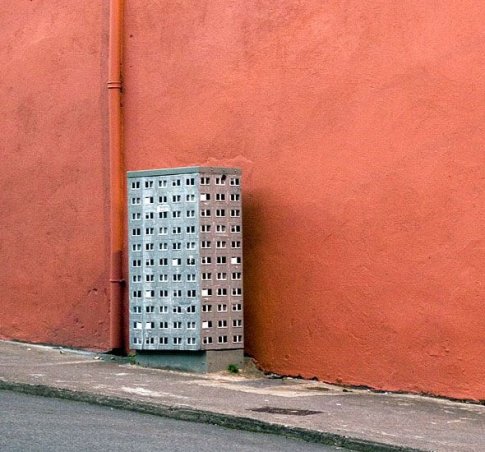
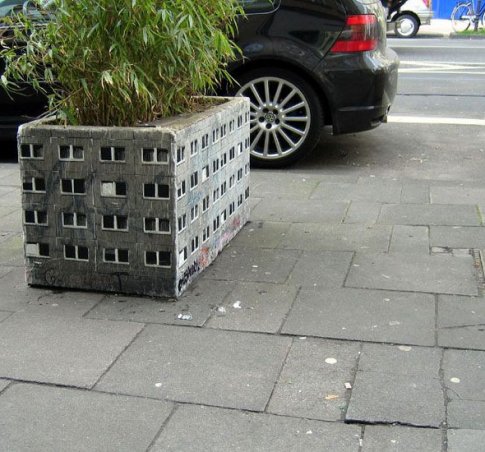
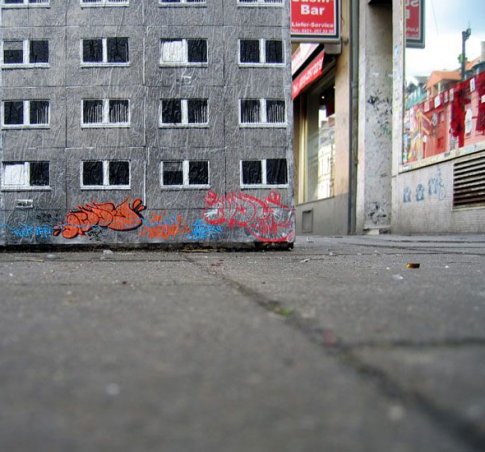
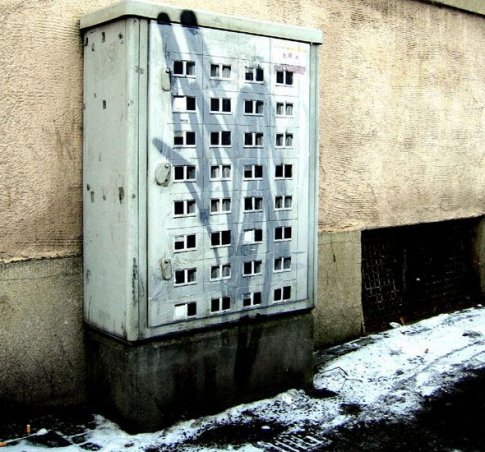
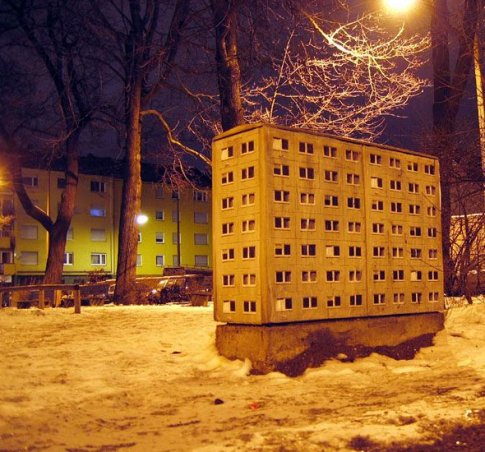
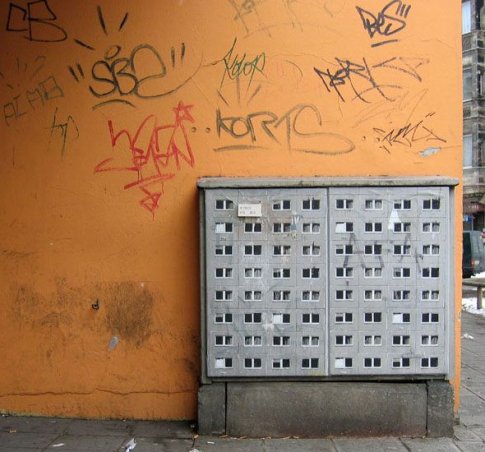
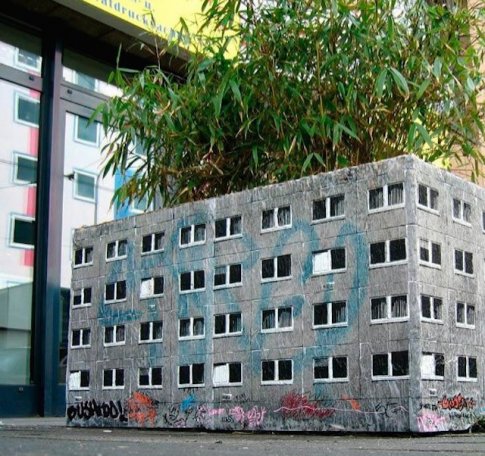
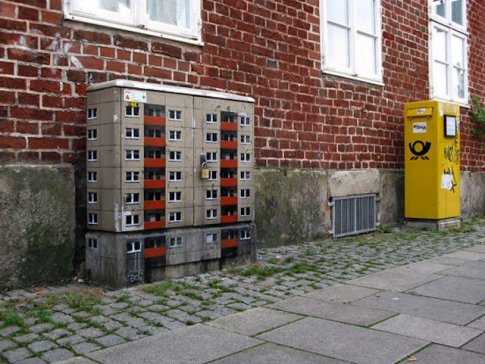
EVOL is a berlin based street artist that transforms banal urban surfaces, into miniature architectural surfaces through pasting. using pasted paper, EVOL transforms electric boxes, small planters and other geometric city forms, into miniature apartment buildings and other structures. each piece of paper is
printed with a repetitive pattern of flat gray walls dotted with plain window frames. once applied to a surface, the paper transforms the form into small building that EVOL often adorns with small
characters. EVOL performs this process within different cities and has even been commissioned to do installations in galleries, where he was created entire blocks of miniature buildings.
source: designboom.com
ARTIST WEB SITE: www. EVOTASTE.com
Here are some good video's to help your day along....
Video's people should watch.............
X X X X X X X X X X X X X X X X X X X X
X X X X X X X X X X X X X X X X X X X X
X X X X X X X X X X X X X X X X X X X X
Deterritorialized mythology
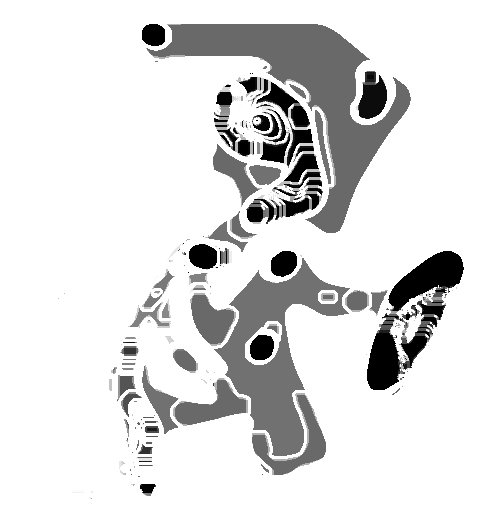
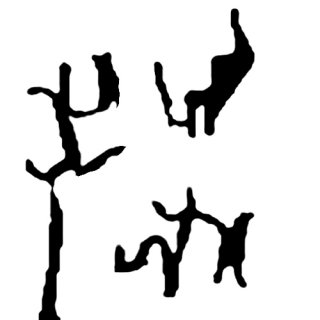

Tanticles dance tangled under the rhythm.
Deterritorialized myth steams.
The cousin
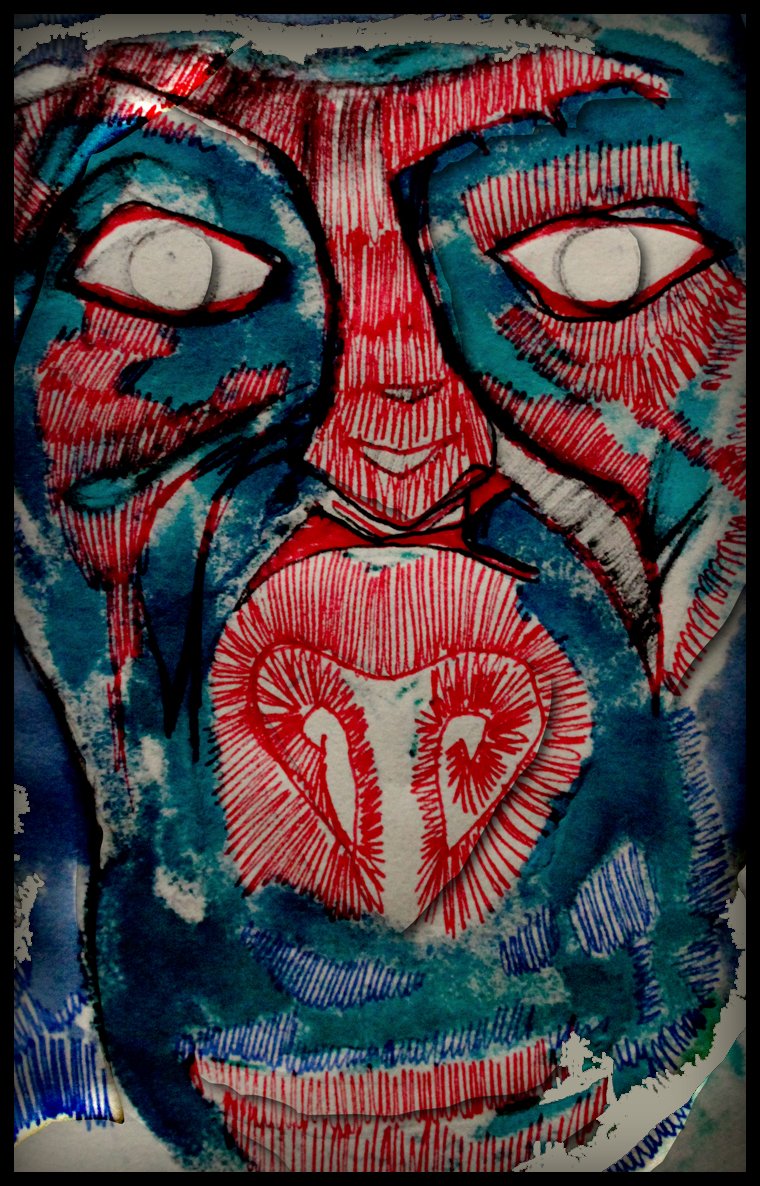
The Two Most Important Days of Your Life according to Mark Twain
The two most important days of your life
are the day you are born
and the day you find out why
-Mark Twain
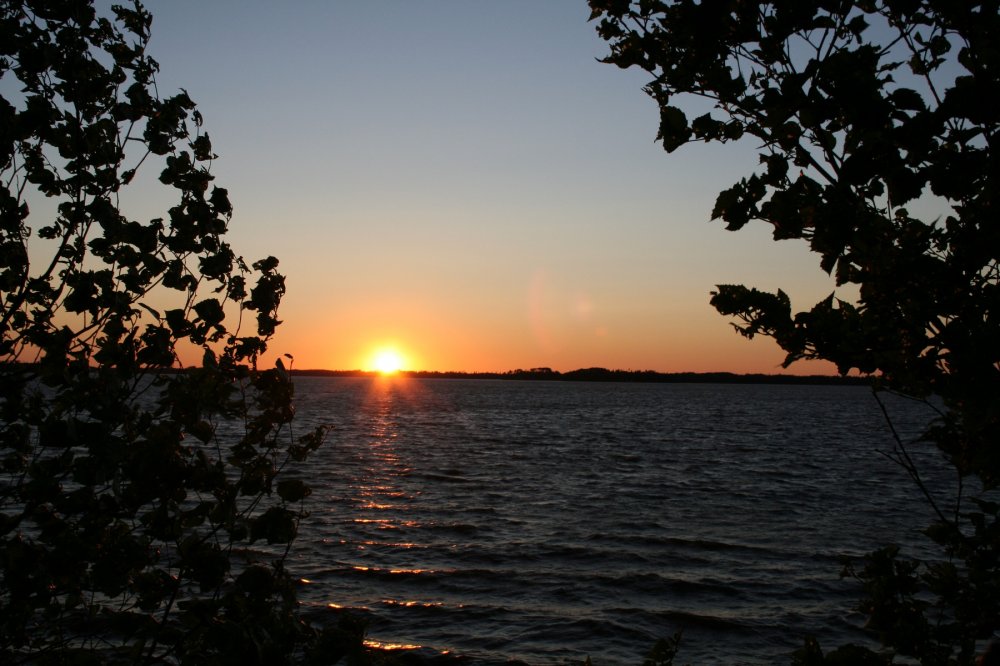
Having The Courage To Say No!
The photo was taken in Hamburg in 1936, during the celebrations for the launch of a ship. In the crowd, one person refuses to raise his arm to give the Nazi salute. The man was August Landmesser. He had already been in trouble with the authorities, having been sentenced to two years hard labour for marrying a Jewish woman.
We know little else about August Landmesser, except that he had two children. By pure chance, one of his children recognized her father in this photo when it was published in a German newspaper in 1991. How proud she must have been in that moment.
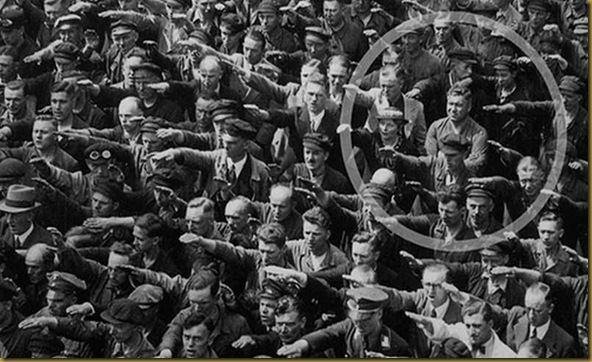
Ordinary people.
The courage to say no.